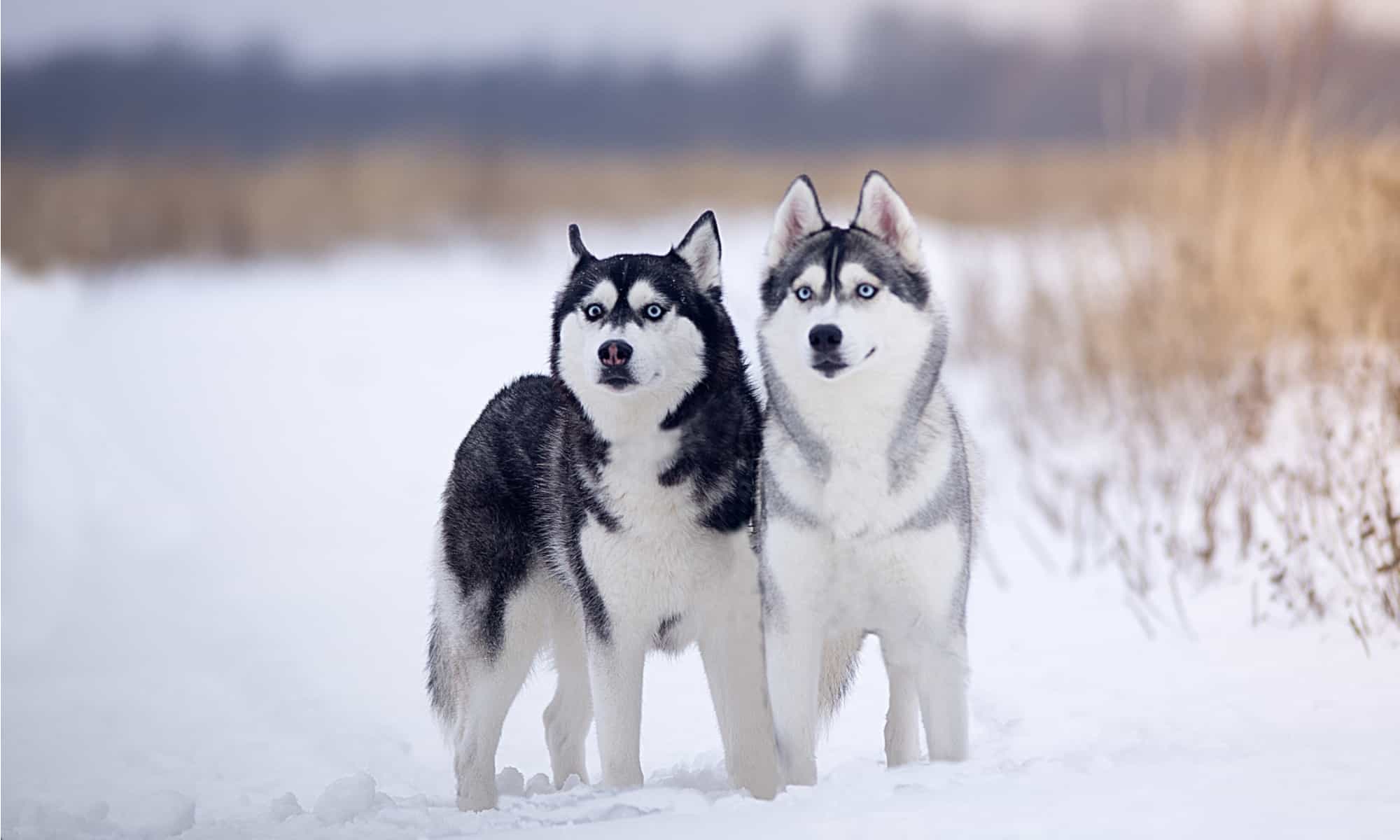
Black and gray huskies stand side by side in the snow.
©SaKuramaS/Shutterstock.com
There are many differences between an Alaskan husky vs a Siberian husky, whether you are aware of those differences or not. These dogs are closely linked in breeding, size, and purpose- but what sets them apart from one another?
In this article, we will bring these differences to light so that you can fully understand the differences between these powerful working dogs.
Read on to learn more about how Alaskan huskies and Siberian huskies are different, and also all of the ways in which they are similar.
Comparing Alaskan Husky vs Siberian Husky
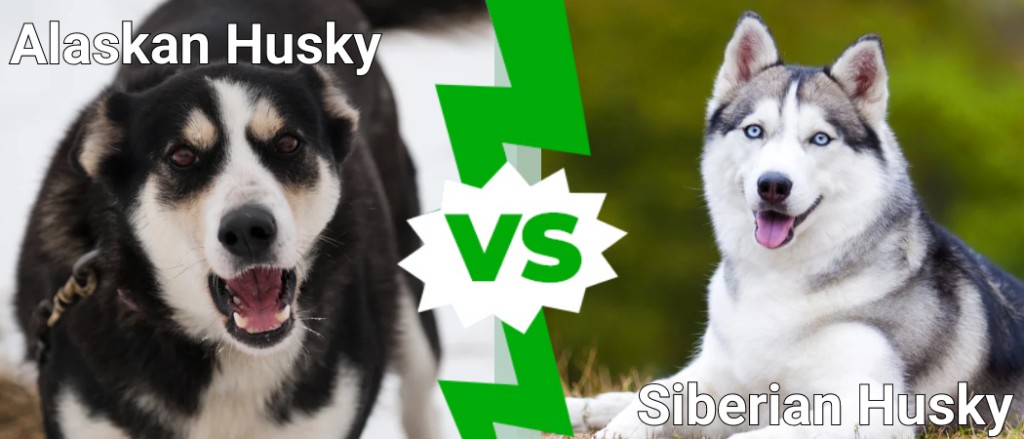
| Alaskan Husky | Siberian Husky | |
|---|---|---|
| Coat | Shorter coat found in white or black | Longer coats found in a variety of colors |
| Weight | 40-55 pounds | 45-60 pounds |
| Eyes | Primarily brown, but sometimes heterochromatic | Blue, green, brown, heterochromatic |
| Bred For | Work | Work and domestic life |
| Habitat | Alaska, United States | Throughout the world |
| Lifespan | 10-15 years | 10-15 years, though may face more complications due to purebred status |
| Purebred | No | Yes |
The 5 Main Differences Between Alaskan Husky vs Siberian Husky

Siberian Huskies are usually larger than Alaskan huskies, with longer coats and more variety of both coat and eye colors.
©Jana Caposova/Shutterstock.com
There are many key differences between Alaskan huskies vs Siberian huskies. Alaskan huskies are not purebred dogs according to the AKC, while Siberian huskies are.
Siberian Huskies are usually larger than Alaskan huskies, with longer coats and more variety of both coat and eye colors. Alaskan huskies and Siberian huskies are bred for different lifestyles over time. These different lifestyles affect their overall lifespans.
Overall here are some key differences between the two different breeds:
- The Alaskan Husky can grow up to 25.5 – 26 inches in height.
- The Siberian Husky, on the other hand, has a height of 24 inches.
- Both dog breeds are medium-sized.
- Siberian Huskies, in contrast, are purebred dogs.
- Siberian Huskies are usually larger than Alaskan huskies and have longer coats and more variety of both coat and eye colors.
- Over time, Alaskan huskies and Siberian huskies have been selectively bred for different lifestyles.
What else is there to learn about Alaskan husky vs Siberian husky dogs?
Let’s go into these differences in more detail:
Alaskan Husky vs Siberian Husky: Coat And Coloring
A primary difference between Alaskan huskies and Siberian huskies is their coat and coloring. Siberian huskies come in a wide variety of colors, including tan, black, white, red, and bi-colored. Alaskan huskies come in solid black or solid white colors. This can be a key distinction that you can make with ease upon looking at these dogs side by side.
Another difference between the coat of an Alaskan husky vs a Siberian husky is the length. While it can be subtle, the fur length of a Siberian husky is slightly longer than that of an Alaskan husky. This is likely due to their relative size differences. However, both dogs have double fur coats to keep them warm in frigid temperatures.
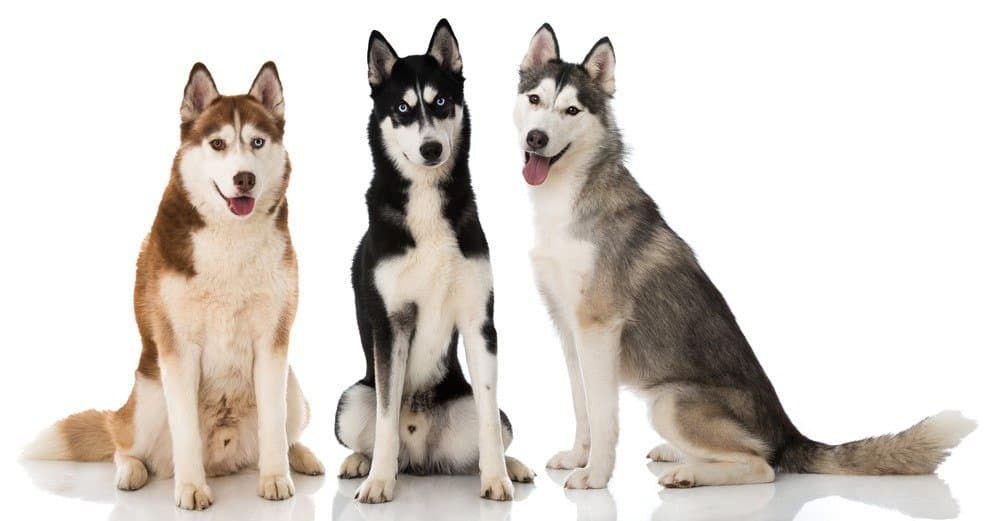
While both of these husky breeds tend to have heterochromia, Siberian huskies are known for having more eye colors overall, while Alaskan huskies typically only have brown eyes.
©Dora Zett/Shutterstock.com
Alaskan Husky Vs Siberian Husky: Size And Weight
Another difference between Alaskan huskies and Siberian huskies can be found in their relative sizes and weights. While the build of an Alaskan husky can be similar to that of a Siberian husky, their weights vary. For example, an Alaskan husky tends to weigh 5 to 10 pounds less than the average Siberian husky, depending on gender.
Alaskan huskies also tend to be leaner and longer than Siberian huskies, given their working dog breeding.
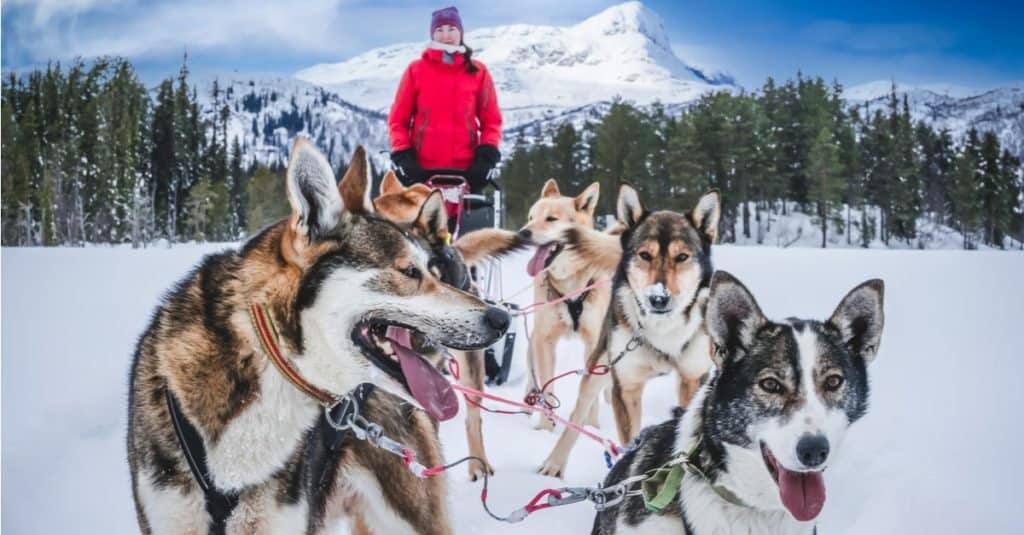
Alaskan husky sled dogs are ready to go into the Arctic mountain wilderness.
©iStock.com/HenrikNorway
Alaskan Husky vs Siberian Husky: Purebred Status
There is a key difference between Alaskan huskies vs Siberian huskies in their breeding. Siberian Huskies have long been considered purebred dogs by the AKC, while Alaskan huskies are not granted purebred status. They are bred with other dogs to increase their working ability, which means they are not purebred.
Many dog breeders don’t consider Alaskan huskies to be a breed of dog at all, while Siberian huskies have been a breed that existed for some time. Alaskan huskies were originally bred as working dogs and therefore were created out of necessity and designed to pull sleds through the snow. There is no set formula for creating the Alaskan husky. This dog is usually bred by a variety of spitz-type dogs.
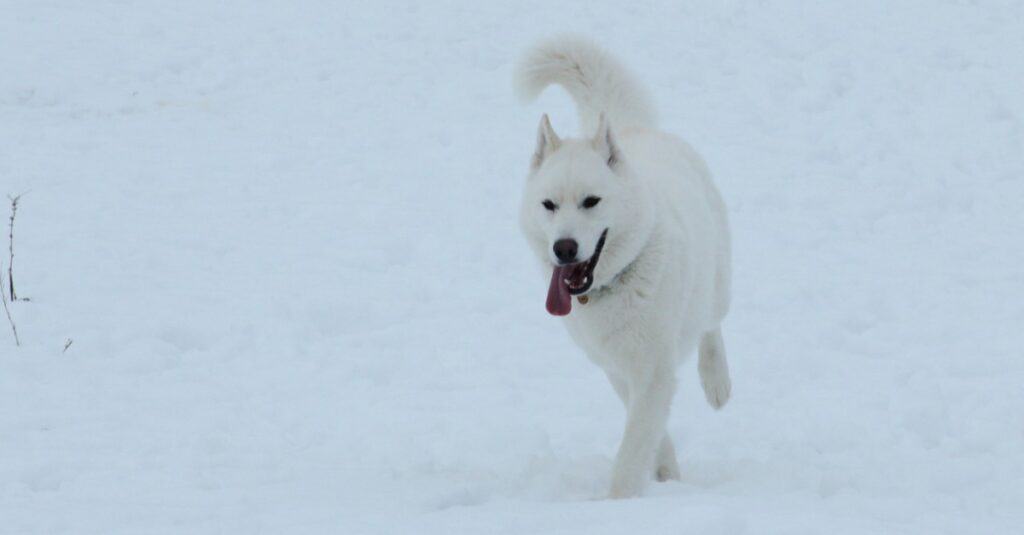
Siberian huskies are bred in a wide variety of colors, including tan, black, white, red, and bi-colored; Alaskan huskies are usually only found in solid black or solid white.
©iStock.com/Nicholas Chase
Alaskan Husky vs Siberian Husky: Eye Color
Another difference between Alaskan huskies and Siberian huskies is their eye coloring. While both of these husky breeds tend to have heterochromia, Siberian huskies are known for having more eye colors overall, while Alaskan huskies typically only have brown eyes.
While this isn’t an absolute and can be a subtle difference that you may not notice, it is something to keep in mind when comparing these two dog breeds. Given the purebred status of Siberian huskies, more colors and variety have been introduced into their breeding, both in their coats and their eyes. Alaskan huskies are simplistic in their appearance since they have only been bred for work.

Siberian Huskies have been bred for different uses over the decades, while Alaskan huskies were originally intended as working dogs and were bred for such work.
©ANURAK PONGPATIMET/Shutterstock.com
Alaskan Husky vs Siberian Husky: Breeding
Siberian Huskies have been bred for different uses over the decades, while Alaskan huskies were originally intended as working dogs and were bred for such work.
Over time, Siberian huskies have become more and more domesticated, leading to key differences in their appearance and stamina when compared to Alaskan huskies. While Siberian huskies were originally bred for work, they have since become associated with domesticity and family life, while Alaskan huskies are still primarily used for work to this day.
This isn’t to say that a Siberian husky can’t still pull a sled through the snow – they seem to still enjoy doing this. However, Alaskan huskies have simply been bred with the sole purpose in mind, and their cross-breeding has created a dog that is stronger and more capable than the Siberian husky that we know today.
Trainability: Alaskan Husky vs Siberian Husky
Over time, the Siberian Husky is expected to exhibit greater intelligence, which is attributed to its earlier domestication. Nevertheless, the Alaskan Husky can also be readily trained with some effort, despite their strong-willed nature.
Due to its ancestry as a sled dog with a strong work ethic, the Alaskan Husky is known for its intelligence and trainability using positive reinforcement methods, including food rewards, play, and praise.
Here are some tips:
- Create a hierarchy to establish order.
- Refrain from punishing your dog.
- Employ positive reinforcement techniques.
- Contemplate crate training.
- Purchase a martingale collar for your husky.
- Maintain consistency throughout the training process.
Training Huskies can be a challenging task, particularly for novice dog owners. This is attributed to the breed’s history, as Huskies were originally bred to pull sleds over extended distances and not for working closely with their owners. Consequently, they were developed for their athletic prowess and endurance rather than a strong bond with humans.
Alaskan Husky vs Siberian Husky: Behavior
These two huskies do have some similar behaviors. They are both independent and intelligent but where the Siberian husky is friendly and thrives on human companionship, the Alaskan husky is even more independent and considered an adventurer. The Alaskan husky does not like routine and is mischievous and if let off the leash, will not stay close. Both huskies need firm guidance in training.
Bonus: Husky vs Wolf: Who Would Win in a Fight?

People often associate huskies with wolves, believing them to be the closest domestic breed to a wolf. It’s indeed true that the spitz breed, which includes huskies, is the closest relative to wolves, thought to have descended from a specific species of wolf that went extinct 20,000 to 30,000 years ago. So in a face-off between a huskie and a wolf, who would emerge victorious?
Huskies, either Siberian or Alaskan, are gentle, non-aggressive dogs in spite of their intimidating appearance. They do have powerful jaws with a bite force of 320 PSI–comparable to pit bulls.
Gray wolves, on the other hand, have a deadly bite force of 400 to 1,000 PSI. And given that these wild animals survive by killing prey as large as moose, elk, and bison, their attack abilities are sharpened. They are also endurance predators–they chase their prey, sometimes for long distances.
In a match-up between these two animals, it’s a safe bet that the predatory wolf would be the victor. No doubt a husky could hold its own valiantly if its life depended on it, but it likely would not have the fight skills to take down a ferocious wolf.
The photo featured at the top of this post is © Elena Sherengovskaya/Shutterstock.com
Ready to discover the top 10 cutest dog breeds in the entire world?
How about the fastest dogs, the largest dogs and those that are -- quite frankly -- just the kindest dogs on the planet? Each day, AZ Animals sends out lists just like this to our thousands of email subscribers. And the best part? It's FREE. Join today by entering your email below.
Thank you for reading! Have some feedback for us? Contact the AZ Animals editorial team.







